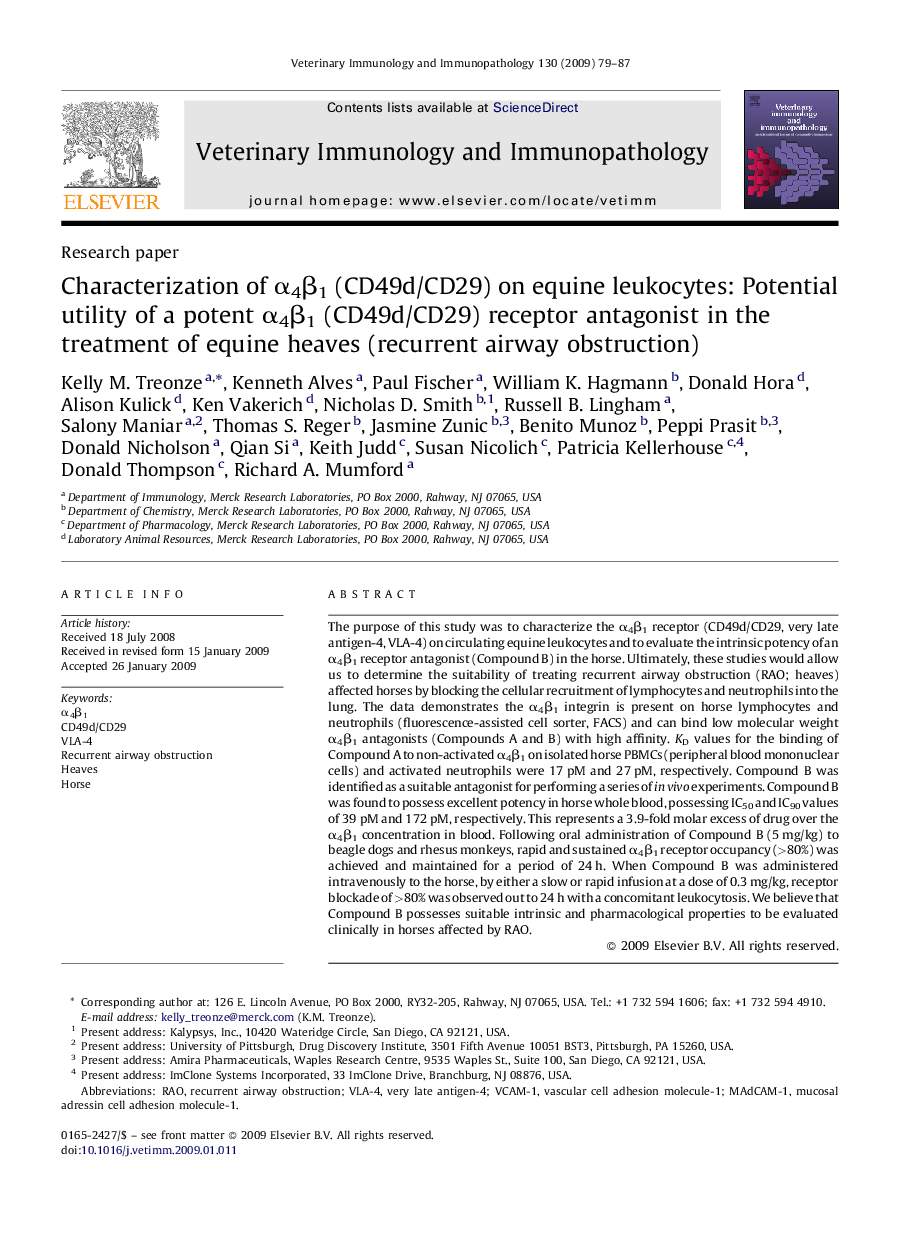| Article ID | Journal | Published Year | Pages | File Type |
|---|---|---|---|---|
| 2462692 | Veterinary Immunology and Immunopathology | 2009 | 9 Pages |
The purpose of this study was to characterize the α4β1 receptor (CD49d/CD29, very late antigen-4, VLA-4) on circulating equine leukocytes and to evaluate the intrinsic potency of an α4β1 receptor antagonist (Compound B) in the horse. Ultimately, these studies would allow us to determine the suitability of treating recurrent airway obstruction (RAO; heaves) affected horses by blocking the cellular recruitment of lymphocytes and neutrophils into the lung. The data demonstrates the α4β1 integrin is present on horse lymphocytes and neutrophils (fluorescence-assisted cell sorter, FACS) and can bind low molecular weight α4β1 antagonists (Compounds A and B) with high affinity. KD values for the binding of Compound A to non-activated α4β1 on isolated horse PBMCs (peripheral blood mononuclear cells) and activated neutrophils were 17 pM and 27 pM, respectively. Compound B was identified as a suitable antagonist for performing a series of in vivo experiments. Compound B was found to possess excellent potency in horse whole blood, possessing IC50 and IC90 values of 39 pM and 172 pM, respectively. This represents a 3.9-fold molar excess of drug over the α4β1 concentration in blood. Following oral administration of Compound B (5 mg/kg) to beagle dogs and rhesus monkeys, rapid and sustained α4β1 receptor occupancy (>80%) was achieved and maintained for a period of 24 h. When Compound B was administered intravenously to the horse, by either a slow or rapid infusion at a dose of 0.3 mg/kg, receptor blockade of >80% was observed out to 24 h with a concomitant leukocytosis. We believe that Compound B possesses suitable intrinsic and pharmacological properties to be evaluated clinically in horses affected by RAO.
